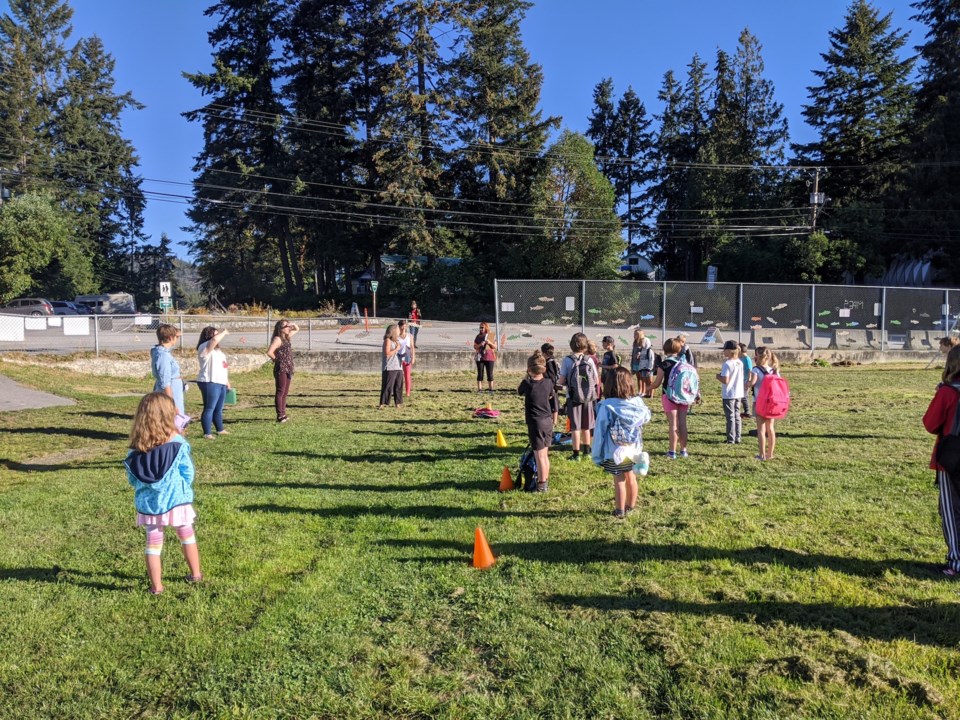Consultations will be a part of School District No. 46’s (SD46) process for deciding how to spend its share of federal back-to-school funding.
Administrative staff told trustees at the first regular board meeting of the new school year on Sept. 9 that the district is expecting to receive two payments of about $578,000 as part of the federal government’s $2-billion Safe Return to School Fund announced Aug. 26.
The province, which decides how the money is distributed, has committed its first payment and the district expects the second instalment in January, said secretary-treasurer Nicholas Weswick at the meeting. “We expect it should be around the same amount, meaning we’ll have about $1.1 million in federal funds,” he said.
Weswick also acknowledged criteria for allocating the money is “fairly broad” and because of that, “we want to as much as time allows consult a bit more broadly on this.” The one-time funding must be spent by June 30, 2021.
Trustee Stacia Leech noted according to criteria laid out by the province, a focus has been placed on using the money to support Indigenous communities and vulnerable students.
Weswick said a “key partner” would be the district’s Aboriginal Advisory Circle. “That’s a population group that should be supported,” he said.
The district also plans to consult the Sunshine Coast Teachers’ Association (SCTA), CUPE 801, principals and vice principals, the District Parent Advisory Council, District Student Leadership Team and the district’s operations committee.
In a release prior to the meeting, the SCTA had urged the district “to use their share of the federal funding to prevent potential COVID-19 outbreaks by reducing the size of classes and ensuring all students have the option to access remote learning.”
SCTA president Jacquie Shelemey said between 20 and 30 students will be sharing a classroom, “making physical distancing difficult and unrealistic,” and that it was “time for the board of education to get moving, find out which families need that remote option, and get the additional supports in place to make it happen. We also need to see some quick action in our schools to end the crowding that has too many students in classrooms with poor ventilation.”
The request is similar to those made by the BC Teachers’ Federation following the federal funding announcement.
SD46 superintendent Patrick Bocking told Coast Reporter in an email following the release that “classrooms have been organized at each school to ensure that the Ministry of Health recommended physical contact expectations can be safely met.” He also said the district “has invested in HVAC systems over the years,” with refits at Halfmoon Bay Elementary School and Kinnikinnick Elementary School over the summer “to ensure that we have well ventilated spaces both now and in the future.” Opening windows have also been installed in classrooms where needed, he said.
When asked by Coast Reporter about the SCTA’s requests during the Sept. 9 board meeting, chair Pammila Ruth said the board is in communication with the SCTA through the superintendent.
“We do listen to what our teachers have to say and what the union has to say, but I think we’ve already covered a lot of those other questions as far as the class sizes and what the funding will go to,” she said.
“We are interested in what’s going on in every realm. We take our role very seriously and we take our communications with the SCTA very seriously as well. It’s just a matter of what our place is as far as governance goes. We have to have that faith in our senior staff that what’s going through is going to the right places. We are listening and we are trying to keep tabs.”
The federal funding comes on top of the district’s portion of the $45.6 million safe restart funding from the province, which the district has “largely” already allocated, including towards increasing staffing levels and adding outdoor sinks for portables, said Weswick.
A report with details on how those funds were spent is expected to be brought forward in the coming months, he said.



